
FACULTY OF ENGINEERING
Department of Genetics and Bioengineering
MATH 208 | Course Introduction and Application Information
| Course Name |
Introduction to Differential Equations II
|
|
Code
|
Semester
|
Theory
(hour/week) |
Application/Lab
(hour/week) |
Local Credits
|
ECTS
|
|
MATH 208
|
Fall/Spring
|
2
|
2
|
3
|
5
|
| Prerequisites |
|
|||||||
| Course Language |
English
|
|||||||
| Course Type |
Elective
|
|||||||
| Course Level |
First Cycle
|
|||||||
| Mode of Delivery | - | |||||||
| Teaching Methods and Techniques of the Course | Problem SolvingCase StudyQ&ASimulation | |||||||
| Course Coordinator | - | |||||||
| Course Lecturer(s) | ||||||||
| Assistant(s) | ||||||||
| Course Objectives | This course includes classification, applications and solution methods of partial differential equations. Fourier series for periodic functions, solution of heat and wave equation by separation method, solution methods of Laplace equation in rectangular and polar coordinates are aimed. |
| Learning Outcomes |
The students who succeeded in this course;
|
| Course Description | In this course basic concepts and classification of partial differential equations will be discussed. The heat, wave and Laplace equation will be given and the solution methods will be taught. |
|
|
Core Courses | |
| Major Area Courses | ||
| Supportive Courses | ||
| Media and Management Skills Courses | ||
| Transferable Skill Courses |
WEEKLY SUBJECTS AND RELATED PREPARATION STUDIES
| Week | Subjects | Related Preparation |
| 1 | Mathematical background for the study of partial differential equations | Erwin Kreyszig, “Advanced Engineering Mathematics”,10Th Edition, (John Wiley and Sons), Sections 9.5, 9.7, 9.8 |
| 2 | Description of partial differential equations. Classification and model definitions. First order partial differential equations | Yehuda Pinchover and Jacob Rubistein, “An Introduction to Partial Differential Equations”, (Cambridge University Press, 2005), Sections 1.1. to 1.7 |
| 3 | Modelling first order partial differential equations. Solving by the method of characteristics | Yehuda Pinchover and Jacob Rubistein, “An Introduction to Partial Differential Equations”, (Cambridge University Press, 2005), Sections 2.1. to 2.4 |
| 4 | Modelling continuity equation, wave equation and traffics flow and applications | Yehuda Pinchover and Jacob Rubistein, “An Introduction to Partial Differential Equations”, (Cambridge University Press, 2005), Sections 2.1. to 2.4 |
| 5 | Partial Laplace transform. Solving first order partial differential equations by partial Laplace transform. | “http://www.math.ttu.edu/~gilliam /ttu/s10/m3351_s10/c15_laplace_trans_pdes.pdf” Chapter 15 |
| 6 | Heat Equation. Solution by separation of variables. Existence and Uniqueness of Solutions. | Kent Nagle, Edward B. Saff and Arthur David Snider, “Fundamentals of Differential Equations and Boundary Value Problems” 6th Edition, (Pearson, 2011), Section 10.5. |
| 7 | Heat and diffusion equations examples and interpretation of the solution results | Kent Nagle, Edward B. Saff and Arthur David Snider, “Fundamentals of Differential Equations and Boundary Value Problems” 6th Edition, (Pearson, 2011), Section 10.5-10.7 |
| 8 | Midterm Exam I | |
| 9 | The wave equation. Solution by seperation of variables. Existence and Uniqueness of Solutions. | Kent Nagle, Edward B. Saff and Arthur David Snider, “Fundamentals of Differential Equations and Boundary Value Problems” 6th Edition, (Pearson, 2011), Section 10.6. |
| 10 | The Laplace's equation in rectangular coordinates. Solution by separation of variables. Existence and Uniqueness of Solutions. | Kent Nagle, Edward B. Saff and Arthur David Snider, “Fundamentals of Differential Equations and Boundary Value Problems” 6th Edition, (Pearson, 2011), Section 10.7. |
| 11 | Laplace's equation in polar coordinates and its solution by the method of separation of variables. | Kent Nagle, Edward B. Saff and Arthur David Snider, “Fundamentals of Differential Equations and Boundary Value Problems” 6th Edition, (Pearson, 2011), Section 10.7. |
| 12 | Solving second order partial differential equations by partial Laplace transform. | “http://www.math.ttu.edu/~gilliam/ttu/s10/m3351_s10/c15_laplace_trans_pdes.pdf” Chapter 15 |
| 13 | Numerical solutions of heat equation | David R. Kincaid and E. Ward Cheney, “Numerical Analysis”, (Brooks/Cole, 1991), Sections: 9.1,9.2 |
| 14 | Numerical solutions of wave equation | David R. Kincaid and E. Ward Cheney, “Numerical Analysis”, (Brooks/Cole, 1991), Sections: 9.1,9.2 |
| 15 | Semester review | |
| 16 | Final exam |
| Course Notes/Textbooks | Kent Nagle, Edward B. Saff and Arthur David Snider, “Fundamentals of Differential Equations and Boundary Value Problems” 6th Edition, (Pearson, 2011), ISBN-13: 978-0321747747. |
| Suggested Readings/Materials | Yehuda Pinchover and Jacob Rubistein, “An Introduction to Partial Differential Equations”, (Cambridge University Press, 2005), ISBN-13:978-0-521-84886-2 Erwin Kreyszig, “Advanced Engineering Mathematics”,10Th Edition, (John Wiley and Sons), ISBN: 978-0-470-45836-5 David R. Kincaid and E. Ward Cheney, “Numerical Analysis”, (Brooks/Cole, 1991), ISBN-10: 0-534-13014-3 |
EVALUATION SYSTEM
| Semester Activities | Number | Weigthing |
| Participation | ||
| Laboratory / Application | ||
| Field Work | ||
| Quizzes / Studio Critiques | ||
| Portfolio | ||
| Homework / Assignments |
1
|
20
|
| Presentation / Jury | ||
| Project | ||
| Seminar / Workshop | ||
| Oral Exams | ||
| Midterm |
1
|
30
|
| Final Exam |
1
|
50
|
| Total |
| Weighting of Semester Activities on the Final Grade |
2
|
50
|
| Weighting of End-of-Semester Activities on the Final Grade |
1
|
50
|
| Total |
ECTS / WORKLOAD TABLE
| Semester Activities | Number | Duration (Hours) | Workload |
|---|---|---|---|
| Theoretical Course Hours (Including exam week: 16 x total hours) |
16
|
4
|
64
|
| Laboratory / Application Hours (Including exam week: '.16.' x total hours) |
16
|
0
|
|
| Study Hours Out of Class |
14
|
3
|
42
|
| Field Work |
0
|
||
| Quizzes / Studio Critiques |
0
|
||
| Portfolio |
0
|
||
| Homework / Assignments |
1
|
10
|
10
|
| Presentation / Jury |
0
|
||
| Project |
0
|
||
| Seminar / Workshop |
0
|
||
| Oral Exam |
0
|
||
| Midterms |
1
|
14
|
14
|
| Final Exam |
1
|
20
|
20
|
| Total |
150
|
COURSE LEARNING OUTCOMES AND PROGRAM QUALIFICATIONS RELATIONSHIP
|
#
|
Program Competencies/Outcomes |
* Contribution Level
|
||||
|
1
|
2
|
3
|
4
|
5
|
||
| 1 | To have adequate knowledge in Mathematics, Science and Genetics and Bioengineering; to be able to use theoretical and applied information in these areas on complex engineering problems. |
|||||
| 2 | To be able to identify, define, formulate, and solve complex Genetics and Bioengineering problems; to be able to select and apply proper analysis and modeling methods for this purpose. |
|||||
| 3 | To be able to design a complex system, process, device or product under realistic constraints and conditions, in such a way as to meet the requirements; to be able to apply modern design methods for this purpose. |
|||||
| 4 | To be able to devise, select, and use modern techniques and tools needed for analysis and solution of complex problems in Genetics and Bioengineering applications; to be able to use information technologies effectively. |
|||||
| 5 | To be able to design and conduct experiments, gather data, analyze and interpret results for investigating complex engineering problems or Genetics and Bioengineering research topics. |
|||||
| 6 | To be able to work efficiently in Genetics and Bioengineering disciplinary and multi-disciplinary teams; to be able to work individually. |
|||||
| 7 | To be able to communicate effectively in Turkish, both orally and in writing; to be able to author and comprehend written reports, to be able to prepare design and implementation reports, to present effectively, to be able to give and receive clear and comprehensible instructions. |
|||||
| 8 | To have knowledge about global and social impact of Genetics and Bioengineering practices on health, environment, and safety; to have knowledge about contemporary issues as they pertain to engineering; to be aware of the legal ramifications of Genetics and Bioengineering solutions. |
|||||
| 9 | To be aware of ethical behavior, professional and ethical responsibility; to have knowledge about standards utilized in Genetics and Bioengineering applications. |
|||||
| 10 | To have knowledge about industrial practices such as project management, risk management, and change management; to have awareness of entrepreneurship and innovation; to have knowledge about sustainable development. |
|||||
| 11 | To be able to collect data in the area of Genetics and Bioengineering, and to be able to communicate with colleagues in a foreign language. |
|||||
| 12 | To be able to speak a second foreign language at a medium level of fluency efficiently. |
|||||
| 13 | To recognize the need for lifelong learning; to be able to access information, to be able to stay current with developments in science and technology; to be able to relate the knowledge accumulated throughout the human history to Genetics and Bioengineering. |
|||||
*1 Lowest, 2 Low, 3 Average, 4 High, 5 Highest
NEWS |ALL NEWS
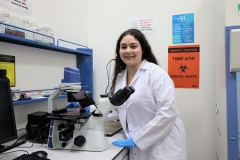
Germany chose Ezgi
Ezgi Kaya, who graduated from Izmir University of Economics (IUE) Department of Genetics and Bioengineering this year, was accepted to the world-famous
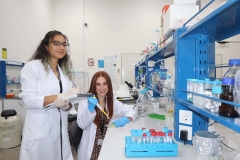
Geneticists’ success in ‘Germany’
Nine newly graduated students from Izmir University of Economics (IUE) Department of Genetics and Bioengineering achieved great success by being accepted to
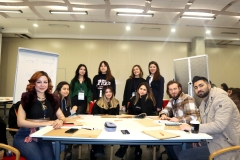
'Sustainable energy' ideas from students
Izmir University of Economics (IUE) organized a workshop on biohydrogen, which is used in many fields from industry to transportation and stands
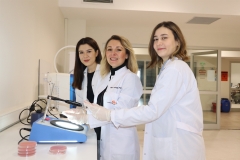
Discovery in thermal spring
Asst. Prof. Dr. Mine Güngörmüşler from Izmir University of Economics (IUE), Department of Genetics and Bioengineering, and two graduate students examined the
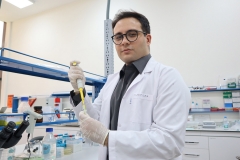
Arda ranked among 7 people in the world
Arda Kıpçak, who graduated from Department of Genetics and Bioengineering, Izmir University of Economics (IUE) this year, was accepted to the world-renowned
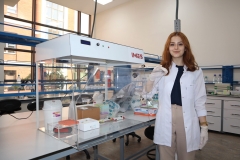
'Smart cabinet' against the virus
Assoc. Prof. Dr. Osman Doluca and his 4 students from Izmir University of Economics (IUE) developed a 'PCR cabinet' that allows samples
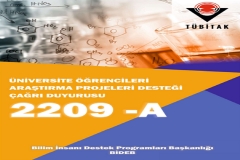
Our Senior Students are Granted Support by TÜBİTAK for Their Graduation Projects
Five of our students are entitled to receive support from TÜBİTAK (The Scientific and Technological Research Council of Turkey) within the scope
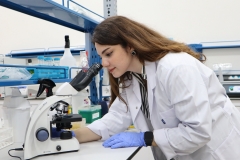
American universities welcome Aydolun with open arms
Aydolun Petenkaya, who completed Izmir University of Economics (IUE) Department of Genetics and Bioengineering as a top student with a full scholarship
